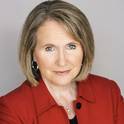
Presentation
Using the Worldly Leadership Lens to Approach the Task of Developing Women Leaders
The Worldly Leadership Symposium: The Leadership Trust
(2009)
Abstract
The rate at which globalization has occurred in all types of businesses and organizations has forced researchers and practitioners into considering new paradigms of leadership (Robinson & Harvey, 2008). In fact, Muczyk and Holt (2008) reported that 85% of Fortune 500 executives say that their firms do not currently have enough competent individuals to lead effectively in this kind of global environment. Most (e.g., Livers, 2007) agree that leading globally requires a fundamental shift in terms of thinking and behavior, but to date most researchers and practitioners are focusing their efforts on understanding and developing clearly defined skill set or competency based frameworks on which to base their leadership development strategies, programs, and initiatives. Will this be enough to develop new leaders with the knowledge, skills, and abilities needed for this dynamic, complex, and challenging environment? I argue that it is not.
This symposium proposes that Mintzberg’s (2004) concept of different worlds within worlds is a very intriguing perspective, which seems to support the research findings I have gathered through the years. I have studied the lifetime development of women leaders (Madsen, 2008a; Madsen, 2008b) and recently have transitioned from U.S. populations (women university presidents and governors) to established and emerging women leaders in other parts of the world. Using a set of predetermined competencies in developmental settings for women within any country leads to less than favorable results. Unless we understand the layers of complexity within cultures, traditions, and perspectives—and a woman “world” is much different than a man’s—we cannot be effective in designing and implementing relevant leadership development programs. It is becoming clear that there is a growing need for human development and adult development perspectives (Hoppe, 2007) to the development of women leaders in these cultures, and this becomes a critical element of a “worldly leadership lens.”
I will argue that worldly leadership development should not just be focused on those who are already in middle to upper management. It is about developing people throughout the world to lead in various settings (e.g., communities, homes, businesses, governments). Efforts to develop worldly leaders can and should start with children and youth. This presentation will discuss the importance of researching and discovering the “lived experiences” of women’s upbringings and adulthood environments (e.g., culture, expectations, traditions, challenges, opportunities) before designing leadership development initiatives for them. It will then propose a set of critical elements related to approaching the task of developing women leaders through this worldly leadership lens. This may include (but is not limited to) the relevant questions outlined in the call for papers: integrity, ethics, dispersed or shared leadership, networks, boundary-crossing, stewardship, sustainability, and notions of the common good. My broader goal is to create a framework around how developing women in various cultures through the “worldly leadership lens” is different from developing women through a more general or generic leadership development lens.
Keywords
- Women,
- Leadership,
- Worldly Leadership,
- Leadership Development,
- Transformational Learning
Disciplines
Publication Date
May 6, 2009
Citation Information
Susan R. Madsen. "Using the Worldly Leadership Lens to Approach the Task of Developing Women Leaders" The Worldly Leadership Symposium: The Leadership Trust (2009) Available at: http://works.bepress.com/susan_madsen/122/
